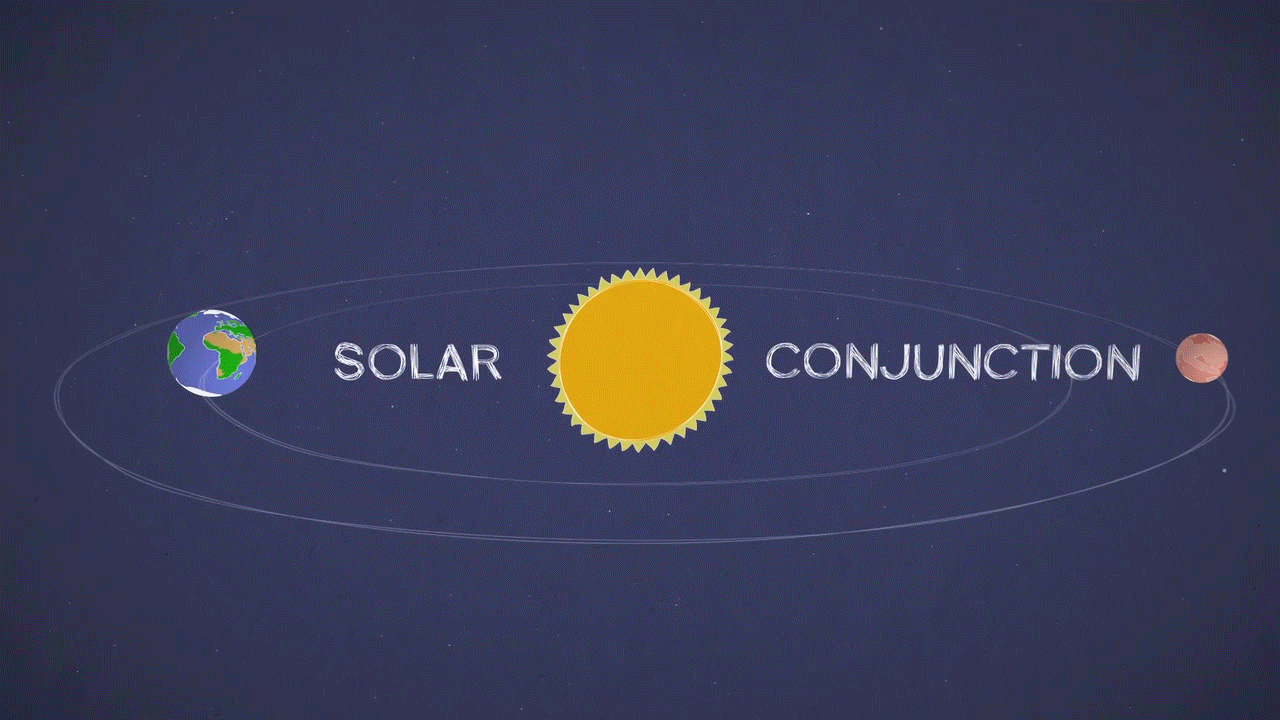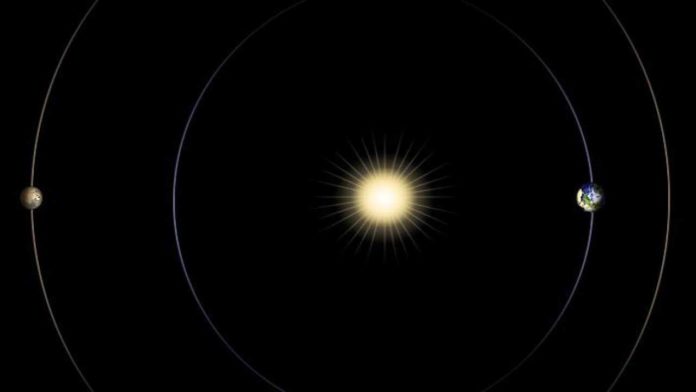The daily communication between antennas here on Earth and those on NASA spacecraft at Mars is going to stop for a few weeks due to Mars Solar Conjunction.
Mars Solar conjunction is a period that occurs when the Mars and Earth in their eternal march around the Sun, are opposite from each other by the fiery orb of the Sun itself.
Sun emits hot, ionized gas from its corona, which stretches out far into space. During solar conjunction, this gas can meddle with radio signals when engineers attempt to speak with spacecraft at Mars, undermining directions and bringing about unforeseen conduct from our deep space explorers.
For safety reasons, engineers hold off on sending commands when Mars disappears far enough behind the Sun’s corona that there’s increased risk of radio interference.
Roy Gladden, manager of the Mars Relay Network at NASA’s Jet Propulsion Laboratory in Pasadena, California, said, “It’s that time again. Our engineers have been preparing our spacecraft for conjunction for months. They’ll still be collecting science data at Mars, and some will attempt to send that data home. But we won’t be commanding the spacecraft out of concern that they could act on a corrupted command.”

When does the solar conjunction occur?
Solar conjunction occurs every two years. This year, the solar conjunction moratorium on commanding all Mars spacecraft is between Aug. 28 and Sept. 7, 2019, when Mars is within 2 degrees of the Sun.
Mission controllers at NASA’s Jet Propulsion Laboratory respond in a variety of ways. They turn off a few instruments and also gather information from others and store it.
On the outside of Mars, the Curiosity rover will stop driving, while the InSight lander won’t move its robotic arm. Also, both the Odyssey orbiter and the Mars Reconnaissance Orbiter will keep gathering data from Curiosity and InSight for coming back to Earth. In any case, just Odyssey will endeavor to hand-off that data to Earth before the end of the conjunction. Interim, another orbiter, MAVEN, will keep on gathering its scientific data however won’t support any relay operations during this time.
Meanwhile, it impacts all the spacecraft’s operations, currently at Mars.
After the end of Solar Conjunction…
As reported in the NASA Science Mars Exploration Program, “Once conjunction is over, the spacecraft will beam the data they’ve collected to NASA’s Deep Space Network, a system of massive Earth-based radio antennas managed by JPL. Engineers will spend about a week downloading the information before normal spacecraft operations resume.”
“If the teams monitoring these missions determine any of the collected science data are corrupted, they can usually have that data retransmitted after the moratorium ends on Sept. 7.”
